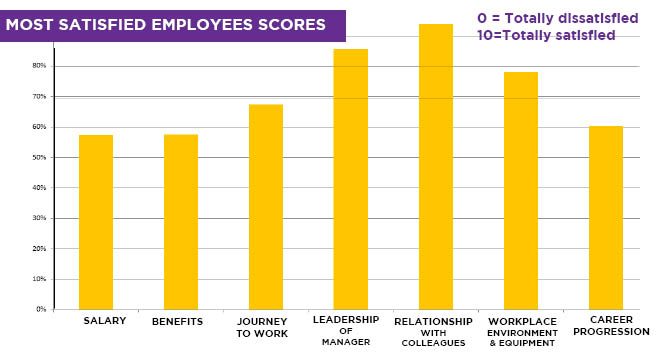29th August, 2018
How satisfied are your employees?

Share

Blog Link Copied
A recent JobNet survey found that although salary plays a role in employee satisfaction, other factors have a major impact. Overall responses revealed that 42% of the 1500 respondents were satisfied with their current job; 10% of this group being extremely satisfied, 23% fairly satisfied and 9% mildly satisfied.
Of the 42% that were satisfied in their current job, 57% of this group also rated salary satisfaction highly. However 94% gave their highest satisfaction scores to relationships with their colleagues, 86% to leadership of their manager, and 78% to workplace environment and equipment.

On the other side of the job satisfaction scale, 32% of all respondents were mildly to extremely dissatisfied in their current job.
While 64% of this group cited dissatisfaction with their salary, 75% gave satisfaction with career prospects and non-salary benefits the lowest scores, 47% were dissatisfied with workplace environment and equipment, and 45% were dissatisfied with the leadership of their manager. When it came to relationships with their colleagues, 65% of this group gave this factor their highest satisfaction score.
Length of service did not appear to impact satisfaction levels. In the satisfied group 71% had been in their current job for less than 3 years, with 57% of this group having less than 12 months service. In the most dissatisfied group, 70% had been in their current job for less than 3 years, with 62% of these employed for less than 12 months.
Likewise, industry did not appear to affect results with respondents in both the most satisfied and the most dissatisfied groups evenly distributed across industry type.
What is evident from this sample survey is the importance that non-salary related aspects have on employee satisfaction. Employees that have cohesive relationships with their colleagues and their managers, and are confident about their future prospects with their company, are more likely to feel satisfied with their work life, and this is important especially when it comes to employee retention. Other tangible aspects for companies to consider include offering benefits or incentives that employees value and providing a workplace and equipment that fosters productivity.